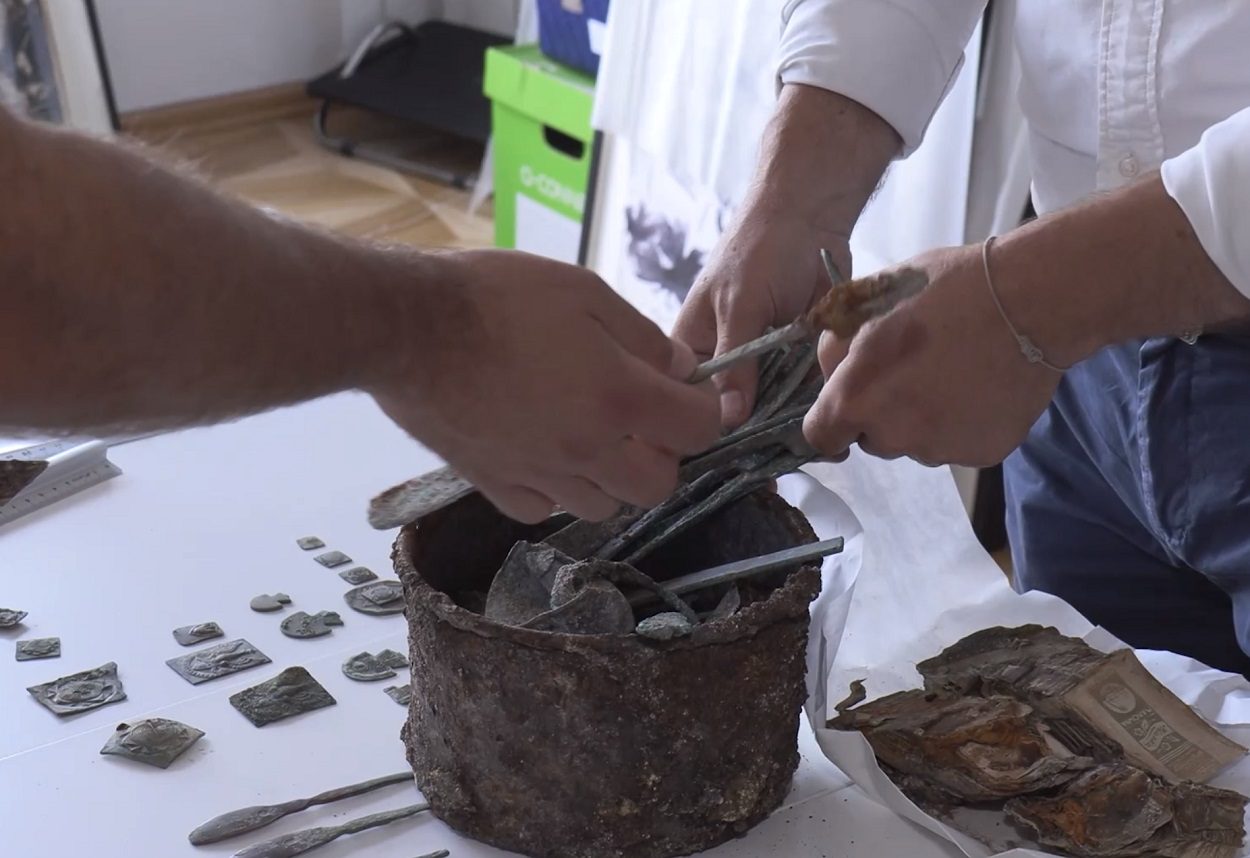Archaeological works in the area of the former Warsaw Ghetto in Warsaw, Poland, have led to the discovery of a completely preserved workshop.
The Warsaw Ghetto was the largest of the Nazi ghettos during World War II. It was established in November 1940 by the German authorities, housing as many as 460,000 imprisoned Jews in an area of 3.4 km2.
During the summer of 1942, the Nazi’s initiated the “Großaktion Warschau”, a codename for the transportation of Jews from the Warsaw Ghetto to concentration camps and mass-killing centres. The ghetto was demolished by the Germans in May 1943 in response to the Warsaw Ghetto Uprising, the largest single revolt by Jews during World War II.
Excavations in the area of present-day Anielewicza Street at the former site of 33 Gęsia Street have uncovered a completely preserved workshop. The workshop dealt with the production of cutlery, decorations and emblems for the needs of the pre-war inhabitants of the district, as well as during the war – as evidenced by the discovery of cutlery with the image of the German eagle.

Michał Grabowski, an archaeologist involved in the excavations said: This discovery is unique because the workshop is almost completely preserved. The wooden floor and the bases of the machines are preserved.”
Beneath the wooden floor, archaeologists uncovered packaging of pre-war Makówki sweets, part of a book, and a fragment of the badge worn by employees of the Fiat factory that opened in 1935. The researchers also found badges from the Dror, a Jewish organisation that helped prepare young people leaving for Palestine, and whose members joined the resistance movement and took part in the Warsaw Ghetto Uprising.
Header Image Credit : PAP

